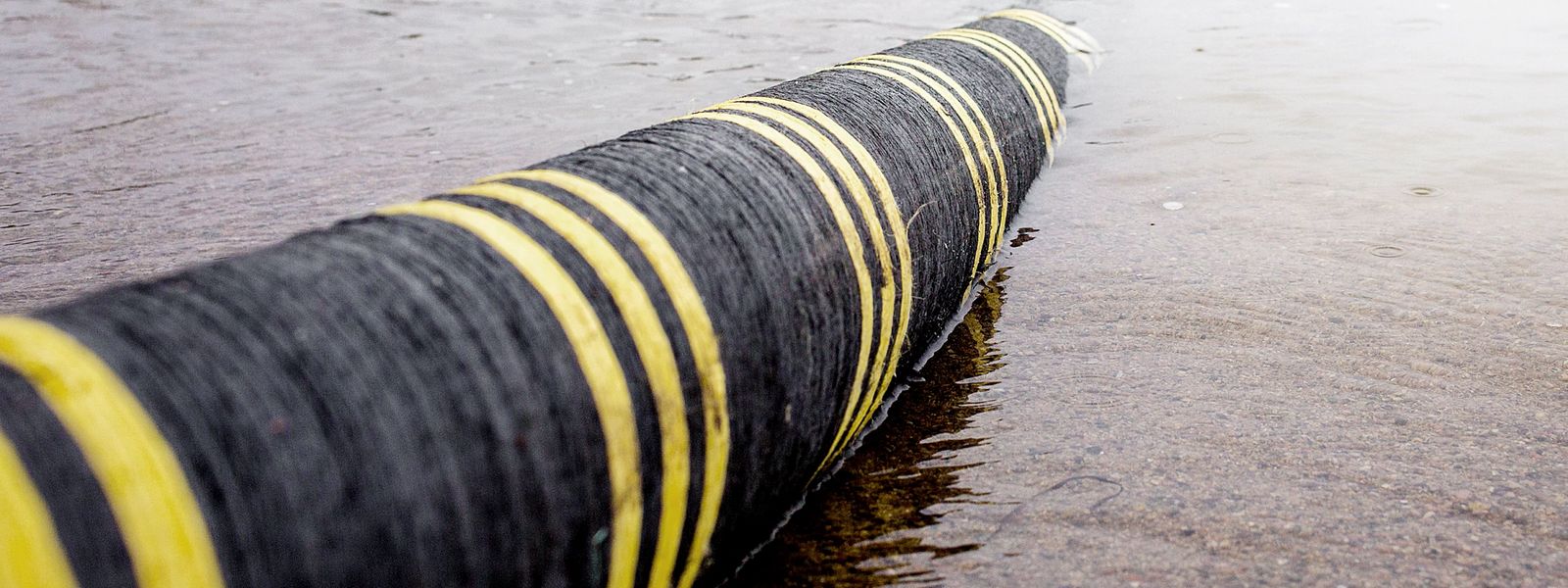NKT – NKT confirmed partner for two Scottish power cable projects with SSEN Transmission
On 28 August 2023, NKT confirmed reservation of production and offshore installation capacity for Scottish transmission system operator (TSO) SSEN Transmission, for power cable systems for two high-voltage direct current (HVDC) transmission links running from the Western Isles to the Scottish mainland, and from Spittal in Caithness to Peterhead.
Now, NKT has signed a framework agreement with SSEN Transmission, and the parties have agreed to proceed with initial work for the two Scottish HVDC interconnectors issued under the frame agreement. With these steps, NKT and SSEN Transmission continue the close collaboration with the aim to strengthen the cable infrastructure supporting the region’s transition to renewable energy.
– We are very satisfied with the progression of the projects and continuing the long-term collaboration with SSEN Transmission to strengthen the interconnection of the Scottish power grid. With our extensive experience in large turnkey HVDC projects, we remain committed to supporting the decarbonization of the power system in Great Britain. The limited notice to proceed with the projects is a statement of the exceptional collaboration with SSEN Transmission on interconnector projects like the Caithness-Moray HVDC Link and the ongoing Shetland HVDC Link, says Darren Fennell, EVP & Head of HV Solutions Karlskrona in NKT.
The Western Isles and Spittal-Peterhead offshore HVDC transmission links are part of The Pathway to 2030 Holistic Network Design (HND) which is a major upgrade of the electricity transmission network across Great Britain. SSEN Transmission play a central role in executing on the HND, supporting the journey to meet UK and Scottish Governments 2030 renewable energy and climate change targets. The HND sets out a single, integrated grid design that supports the large-scale delivery of electricity generated from offshore wind.
– We are delighted to have secured agreements with our supply chain partner NKT to help deliver the cables needed for the Western Isles and Spittal-Peterhead HVDC connections, an important step supporting the timely delivery of these projects. Recognizing the unprecedented global demand for HVDC technology, we have acted with pace to secure these key components at the earliest opportunity – and we’re now looking forward to building on our long-established and strong working relationship with NKT, says Sandy Mactaggart, Director of Offshore Delivery at SSEN Transmission.
– We are particularly pleased to be working with NKT on the delivery of the crucial Western Isles Connection Project. Having been involved in efforts to connect the Western Isles for several years, NKT have demonstrated a real understanding of the project’s importance in enabling the development of renewable energy in and around the Western Isles and the associated benefits this will deliver for the local community, and it will be great to work together to help realize that opportunity, continues Sandy Mactaggart.
NKT and SSEN Transmission expect the final construction contracts for the two projects to be called off 1H 2026.
Key facts:
Western Isles
- Cable route: approximately 160 km of 525 kV HVDC combined on- and offshore route length
- Transmission link capacity: 1.8GW
- Schedule: the final construction contract is expected to be called off 1H 2026
Spittal-Peterhead
- Cable route: approximately 220 km of 525 kV HVDC combined on- and offshore route length
- Transmission link capacity: 2.0GW
- Schedule: the final construction contract is expected to be called off 1H 2026
SourceNKT
EMR Analysis
More information on NKT: See the full profile on EMR Executive Services
More information on Claes Westerlind (President and Chief Executive Officer, NKT): See the full profile on EMR Executive Services
More information on Darren Fennell (Members of the Global Leadership Team, Executive Vice President, Head of HV Solutions Karlskrona, NKT): See the full profile on EMR Executive Services
More information on SSEN Transmission (Scottish and Southern Electricity Networks): https://www.ssen-transmission.co.uk/ + We are SSEN Transmission (the trading name for Scottish Hydro Electric Transmission) and are part of the SSE plc Group.
We are responsible for the electricity transmission network in the north of Scotland, maintaining and investing in the high voltage 132kV, 220kV, 275kV and 400kV electricity transmission network.
Our network consists of underground and subsea cables, overhead lines on wooden poles or steel towers, and electricity substations. It extends over a quarter of the UK’s land mass, crossing some of its most challenging terrain.
Our first priority is to provide a safe and reliable supply of electricity to our communities. We do this by taking the electricity from generators and transporting it at high voltages over long distances through our transmission network for onwards distribution to homes and businesses in villages, towns and cities.
Our operating area is home to vast renewable energy resources and this is being harnessed by wind, hydro and marine generation. Working closely with National Grid, the GB transmission System Operator, we also enable these electricity generators to connect to the transmission system by providing their connections and allowing the electricity generated by them to be transported to areas of demand across the country.
Scotland’s transmission network has a strategic role to play in supporting delivery of the UK and Scotland’s Net Zero targets. We’re already a mass exporter of renewable energy, with around two thirds of power generated in our network area exported to demand centres further south. By 2050, the north of Scotland is expected to need 40GW of low carbon energy capacity to support net zero delivery. For context, we currently have around 7GW of renewable generation connected in the north of Scotland.
As a natural monopoly, we are closely regulated by the GB energy regulator, Ofgem, who determines how much revenue we are allowed to earn for constructing, maintaining and renovating our transmission network in the north of Scotland. These costs are shared between all those using the transmission system, including generation developers and electricity consumers.
As a stakeholder-led business, SSEN Transmission is committed to inclusive stakeholder engagement, and we conduct this at an ‘Advanced’ level as assessed by AccountAbility, the international consulting and standards firm.
More information on Alistair Phillips-Davies (Chief Executive, SSE Plc.): https://www.sse.com/who-we-are/our-leadership/group-executive-committee/ + https://www.linkedin.com/in/alistair-phillips-davies-14213871/
More information on Sandy Mactaggart (Director of Offshore Delivery, SSE Transmission): https://www.linkedin.com/in/sandy-mactaggart-524b35108/
EMR Additional Notes:
- Transmission System Operator (TSO):
- A Transmission System Operator (TSO) is an entity entrusted with transporting energy in the form of natural gas or electrical power on a national or regional level, using fixed infrastructure. The term is defined by the European Commission.
- Distribution System Operators (DSO):
- Entities responsible for distributing and managing energy from the generation sources to the final consumers. Digitalisation is the key to securing the DSO model, which requires investments in automation, smart meters, real-time systems, big data and data analytics.
- A DNO (Distribution Network Operators) already performs much of the tasks that a DSO does, but there are differences. A conventional distribution network is not an active but a reactive or passive network. Passive distribution networks are designed to accept bulk power from transmission system and distribute it, down the network, to consumers.
- Interconnectors:
- Interconnectors are high voltage cables that are used to connect the electricity systems of neighbouring countries. They allow us to trade excess power, such as renewable energy created by the sun, wind and water, between different countries.
- An interconnector (also known as a DC tie in the USA) is a structure which enables high voltage DC electricity to flow between electrical grids. An electrical interconnector allows electricity to flow between separate AC networks, or to link synchronous grids.
- HVDC Light:
- HVDC Light is the successful and environmentally-friendly way to design a power transmission system for a submarine cable, an underground cable, using over head lines or as a back-to-back transmission. HVDC Light is HVDC technology based on voltage source converters (VSCs).
- HVDC Light is designed to transmit power underground and underwater, also over long distances. It offers numerous environmental benefits, including “invisible” power lines, neutral electromagnetic fields, oil-free cables and compact converter stations.
- As its name implies, HVDC Light is a dc transmission technology. However, it is different from the classic HVDC technology used in a large number of transmission schemes. Classic HVDC technology is mostly used for large point-to-point transmissions, often over vast distances across land or under water. It requires fast communications channels between the two stations, and there must be large rotating units – generators or synchronous condensers – present in the AC networks at both ends of the transmission. HVDC Light consists of only two elements: a converter station and a pair of ground cables. The converters are voltage source converters, VSC’s. The output from the VSC’s is determined by the control system, which does not require any communications links between the different converter stations. Also, they don’t need to rely on the AC network’s ability to keep the voltage and frequency stable. These feature make it possible to connect the converters to the points bests suited for the AC system as a whole.
- HVDC (High-Voltage Direct Current):
- Key enabler for a carbon-neutral energy system. It is highly efficient for transmitting large amounts of electricity over long distances, integration of renewables and interconnecting grids, opening up for new sustainable transmission solutions.
- HVDC Links:
- The first successful HVDC experimental long distance line (37 miles) was made at Munich, Germany in 1882 by Oskar Von Miller and fellow engineers.
- HVDC allows power transmission between AC transmission systems that are not synchronized. Since the power flow through an HVDC link can be controlled independently of the phase angle between source and load, it can stabilize a network against disturbances due to rapid changes in power.
- An HVDC line has considerably lower losses compared to HVAC over longer distances.

- Neu Connect (the first power interconnection between Great Britain and Germany): https://neuconnect-interconnector.com +
- The NeuConnect Interconnector will create the first direct power link between Germany and Great Britain, connecting two of Europe’s largest energy markets for the first time. Around 720km of land and subsea cables will form an ‘invisible highway’ allowing up to 1.4GW of electricity to move in either direction, enough to power up to 1.5 million homes over the life of the project.
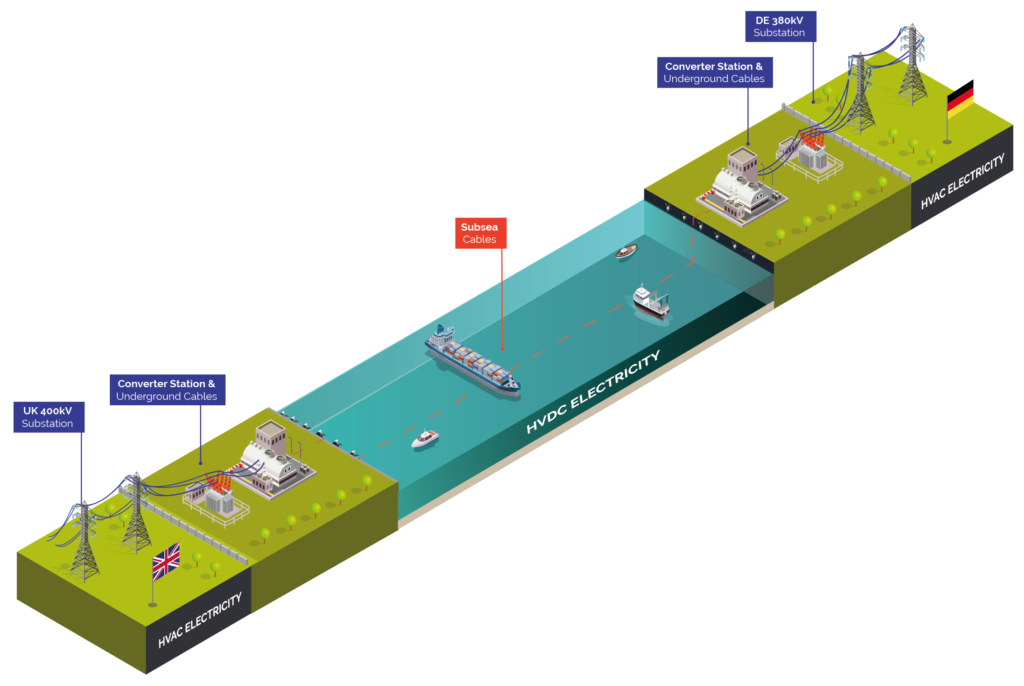
- The Tyrrhenian Link: https://www.terna.it/en/projects/public-engagement/Tyrrhenian-link +
- Connecting Sicily with Sardinia and the Italian peninsula via a double underwater cable: a new electricity corridor at the centre of the Mediterranean; the Tyrrhenian Link. At 950 kilometres long and with a capacity of 1000 MW, this is an infrastructure initiative of international significance, another step towards a more sustainable energy future. The link will improve electricity exchange capacity, facilitate the development of renewable energy sources, and the reliability of the grid.
- The overall project involves two sections: EAST from Sicily to Campania and WEST from Sicily to Sardinia.
- The East section is 480 kilometres long and connects the Fiumetorto landing point, in the municipality of Termini Imerese in Sicily, with the landing point in Torre Tuscia Magazzeno, near Battipaglia in Campania.
- The WEST section is approximately 470 kilometres long and connects the Fiumetorto landing point to the one in Terra Mala, in Sardinia.

- The Viking Link: https://viking-link.com +
- World’s longest power interconnection. the Viking Link is a 1400 MW high voltage direct current (DC) electricity link between the British and Danish transmission systems connecting at Bicker Fen substation in Lincolnshire and Revising substation in southern Jutland, Denmark.

- The North Sea Link: https://northsealink.com/ + North Sea Link is a 720 kilometre subsea interconnector linking the electricity systems of the UK and Norway. The 1400 megawatt interconnector stretches from Blyth in the UK, across the North Sea, to Kvilldal in Norway.
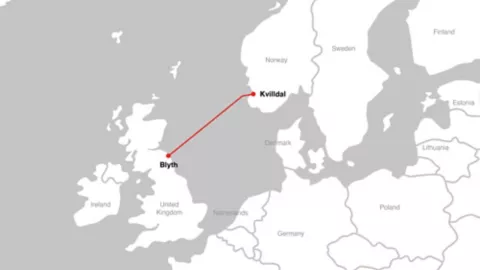
- The Hertel–New York interconnection line: https://www.hydroquebec.com/projects/hertel-new-york-interconnection/ + The Hertel–New York interconnection line project aims to supply clean, renewable energy to New York City. In Québec, the project involves the construction of a line that will span 57.7 km (56.1 km underground and 1.6 km underwater). This 400-kV direct current line will connect Hertel substation in La Prairie to an interconnection point in the Rivière Richelieu at the Canada–United States border.

- The Biscay Gulf Project: https://www.inelfe.eu/en/projects/bay-biscay + The electricity interconnection between Gatika (Spain) and Cubnezais (France) will be the first fundamentally submarine interconnection between Spain and France. This project will increase the exchange capacity from 2,800 to 5,000 MW, improving the safety, stability and quality of electricity supply between the two countries and also with the rest of Europe.
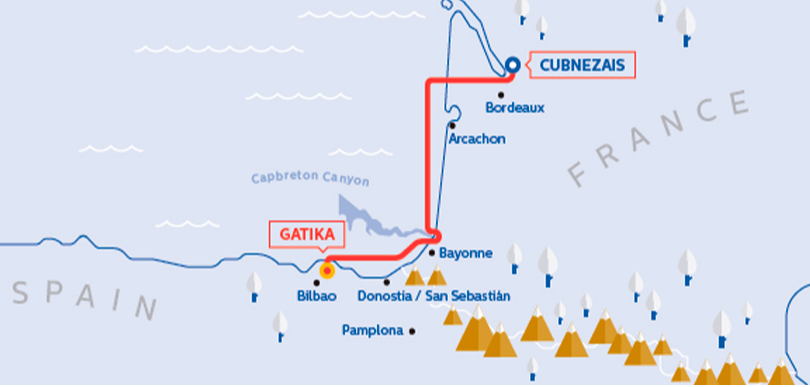
- The Eastern Green Link 2 (EGL2): https://www.ssen-transmission.co.uk/projects/project-map/eastern-green-link-2/ + The Eastern Green Link 2 project is a proposal to install a sub-sea high-voltage direct current (HVDC) cable from Sandford Bay, at Peterhead, to Drax in England. There is currently a large amount of forecasted generation that will require connection to the electricity network in the coming years and as such we are proposing several upgrades to the transmission network across the north of Scotland to facilitate this. The Eastern HVDC Link will play a key role in helping achieve our Net-Zero targets.
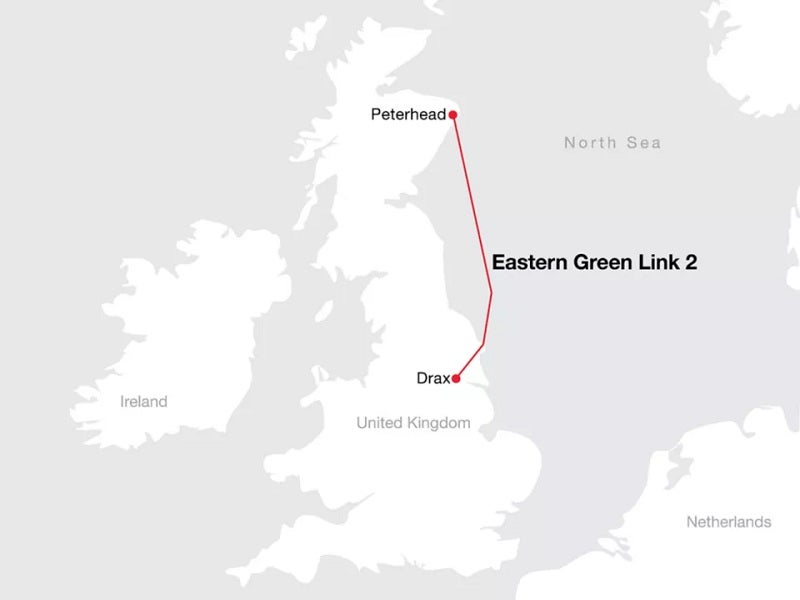
- The EuroAsia Interconnector: https://euroasia-interconnector.com/ + EuroAsia Interconnector Limited is the official EU project developer of the 2,000MW electricity interconnector between Israel, Cyprus, Greece and Europe. The EuroAsia Interconnector is a leading European Project of Common Interest (PCI) labelled as an EU “electricity highway” connecting the national electricity grids of Israel, Cyprus and Greece through a 1,208 km subsea HVDC cable.
- The EuroAsia Interconnector comprises the electricity interconnection between the grids of Israel, Cyprus, Greece through a subsea DC cable and with HVDC onshore converter stations at each connection point, with a total capacity of 2000MW. The project is an energy highway bridging Asia and Europe, with a total length of 1,208 km. It creates a reliable alternative route for the transfer of electric energy to and from Europe.
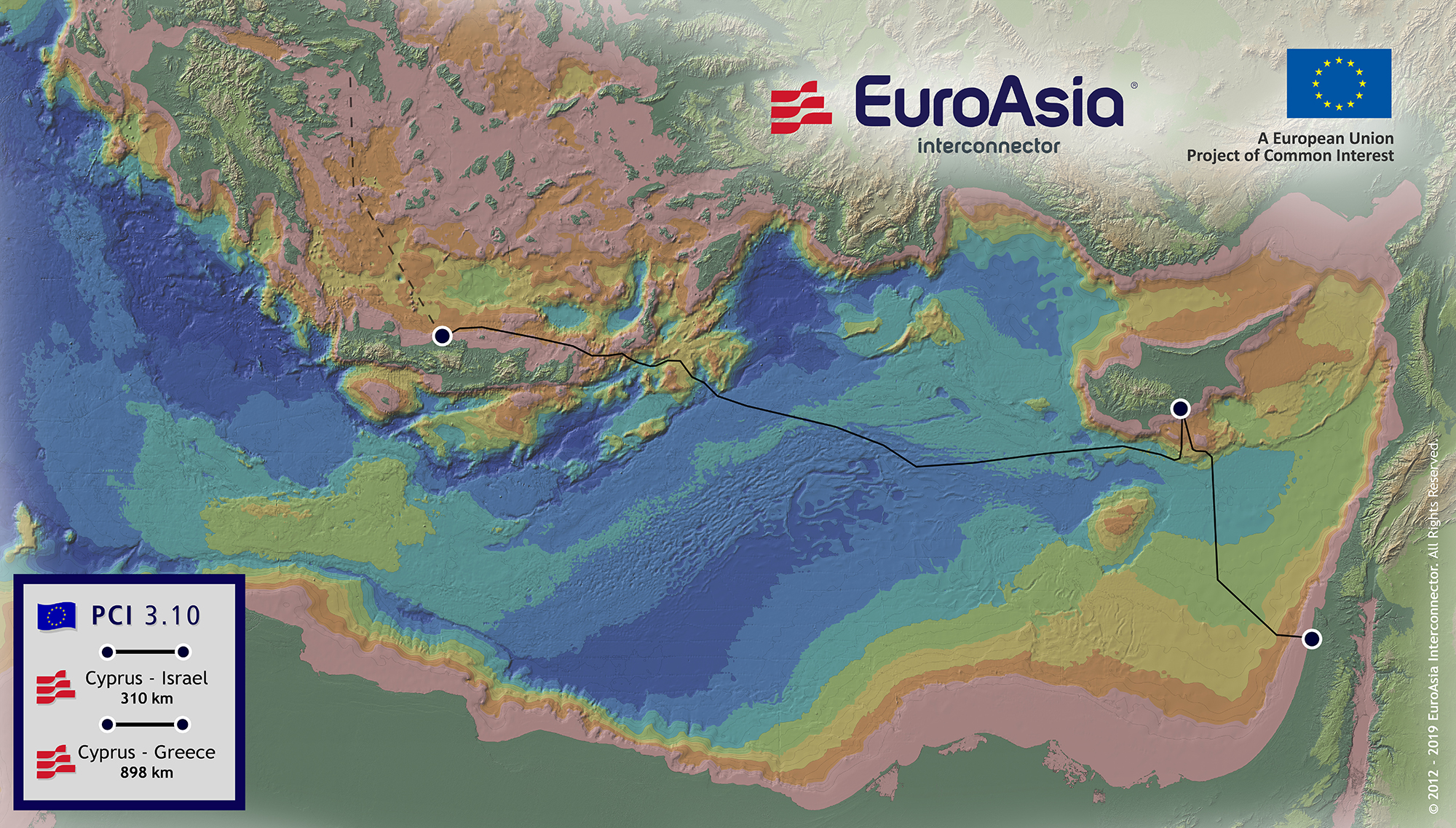
- Carbon Dioxide (CO2):
- Primary greenhouse gas emitted through human activities. Carbon dioxide enters the atmosphere through burning fossil fuels (coal, natural gas, and oil), solid waste, trees and other biological materials, and also as a result of certain chemical reactions (e.g., manufacture of cement). Carbon dioxide is removed from the atmosphere (or “sequestered”) when it is absorbed by plants as part of the biological carbon cycle.
- Biogenic Carbon Dioxide (CO2):
- Biogenic Carbon Dioxide (CO2) and Carbon Dioxide (CO2) are the same. Scientists differentiate between biogenic carbon (that which is absorbed, stored and emitted by organic matter like soil, trees, plants and grasses) and non-biogenic carbon (that found in all other sources, most notably in fossil fuels like oil, coal and gas).
- Carbon Capture and Storage (CCS):
- CCS involves the capture of carbon dioxide (CO2) emissions from industrial processes. This carbon is then transported from where it was produced, via ship or in a pipeline, and stored deep underground in geological formations.
- CCS projects typically target 90 percent efficiency, meaning that 90 percent of the carbon dioxide from the power plant will be captured and stored.
- Decarbonization:
- Reduction of carbon dioxide emissions through the use of low carbon power sources, achieving a lower output of greenhouse gasses into the atmosphere.
- Carbon Footprint:
- There is no universally agreed definition of what a carbon footprint is.
- A carbon footprint is generally understood to be the total amount of greenhouse gas (GHG) emissions that are directly or indirectly caused by an individual, organization, product, or service. These emissions are typically measured in tonnes of carbon dioxide equivalent (CO2e).
- In 2009, the Greenhouse Gas Protocol (GHG Protocol) published a standard for calculating and reporting corporate carbon footprints. This standard is widely accepted by businesses and other organizations around the world. The GHG Protocol defines a carbon footprint as “the total set of greenhouse gas emissions caused by an organization, directly and indirectly, through its own operations and the value chain.”
- CO2e:
- CO2e means “carbon dioxide equivalent”. In layman’s terms, CO2e is a measurement of the total greenhouse gases emitted, expressed in terms of the equivalent measurement of carbon dioxide. On the other hand, CO2 only measures carbon emissions and does not account for any other greenhouse gases.
- A carbon dioxide equivalent or CO2 equivalent, abbreviated as CO2-eq is a metric measure used to compare the emissions from various greenhouse gases on the basis of their global-warming potential (GWP), by converting amounts of other gases to the equivalent amount of carbon dioxide with the same global warming potential.
- Carbon dioxide equivalents are commonly expressed as million metric tonnes of carbon dioxide equivalents, abbreviated as MMTCDE.
- The carbon dioxide equivalent for a gas is derived by multiplying the tonnes of the gas by the associated GWP: MMTCDE = (million metric tonnes of a gas) * (GWP of the gas).
- For example, the GWP for methane is 25 and for nitrous oxide 298. This means that emissions of 1 million metric tonnes of methane and nitrous oxide respectively is equivalent to emissions of 25 and 298 million metric tonnes of carbon dioxide.
- Carbon Credits or Carbon Offsets:
- Permits that allow the owner to emit a certain amount of carbon dioxide or other greenhouse gases. One credit permits the emission of one ton of carbon dioxide or the equivalent in other greenhouse gases.
- The carbon credit is half of a so-called cap-and-trade program. Companies that pollute are awarded credits that allow them to continue to pollute up to a certain limit, which is reduced periodically. Meanwhile, the company may sell any unneeded credits to another company that needs them. Private companies are thus doubly incentivized to reduce greenhouse emissions. First, they must spend money on extra credits if their emissions exceed the cap. Second, they can make money by reducing their emissions and selling their excess allowances.
- HND (Holistic Network Design) :
- The Holistic Network Design (HND) is a first of its kind, integrated approach for connecting 23GW of offshore wind to Great Britain.
- By considering future offshore generation out to 2030, infrastructure can be planned to bring power to the grid cohesively, ensuring maximum benefit for consumers, local communities and the environment.
- The HND provides a recommended offshore and onshore design for a 2030 electricity network, that facilitates the Government’s ambition for 50GW of offshore wind by 2030.
- The HND enables investment and delivery of infrastructure, including locations in North and South Wales, the Scottish Islands and West Coast, and the East Coast of Scotland and Aberdeenshire, Lancashire, North-East England, and Yorkshire & Humber, opening the door for more jobs and economic growth in these regions.
- The recommended design in the HND has equally considered four different objectives to make sure the most appropriate approach is taken forwards, including:
- Cost to consumer
- Deliverability and operability
- Impact on environment
- Impact on local communities
- Grid, Microgrids, DERs and DERM’s:
- The power grid is a network for delivering electricity to consumers. The power grid includes generator stations, transmission lines and towers, and individual consumer distribution lines.
- The grid constantly balances the supply and demand for the energy that powers everything from industry to household appliances.
- Electric grids perform three major functions: power generation, transmission, and distribution.
- A microgrid is a small-scale power grid that can operate independently or collaboratively with other small power grids. The practice of using microgrids is known as distributed, dispersed, decentralized, district or embedded energy production.
- Smart Grid is any electrical grid + IT at all levels . Micro Grid is a group of interconnected loads and DERs (Distributed energy resources) within a clearly defined electrical and geographical boundaries witch acts as a single controllable entity with respect to the main grid.
- Distributed energy resources (DERs) are small-scale electricity supply (typically in the range of 3 kW to 50 MW) or demand resources that are interconnected to the electric grid. They are power generation resources and are usually located close to load centers, and can be used individually or in aggregate to provide value to the grid.
- Common examples of DERs include rooftop solar PV units, natural gas turbines, microturbines, wind turbines, biomass generators, fuel cells, tri-generation units, battery storage, electric vehicles (EV) and EV chargers, and demand response applications.
- Distributed energy resources management systems (DERMS) are platforms which helps mostly distribution system operators (DSO) manage their grids that are mainly based on distributed energy resources (DER).
- DERMS are used by utilities and other energy companies to aggregate a large energy load for participation in the demand response market. DERMS can be defined in many ways, depending on the use case and underlying energy asset.
- Kilovolt-Amperes (kV):
- Kilovolt or “kV” means a unit of potential difference equal to 1,000 volts. Kilovolt or “kV” means the potential difference between two points on a conductor carrying a current of one ampere when the power dissipated between the two points is one kilovolt-ampere. Kilovolt means one thousand volts (kV).
- Kilovolt (kVA):
- kVA stands for Kilo-volt-amperes – a term used for the rating of an electrical circuit. kVA is the product of the circuits maximum current and voltage rating. It is also known as Apparent Power.
- kW is the unit of real power and kVA is a unit of apparent power (or real power plus re-active power). The power factor, unless it is defined and known, is therefore an approximate value (typically 0.8), and the kVA value will always be higher than the value for kW.
- A kVA is 1,000 volt-amps. It’s what you get when you multiply the voltage (the force that moves electrons around a circuit) by the amps (electrical current).
- Megavolt-Amperes (MVA):
- MVA or megavolt-amperes is the unit used to measure the apparent power in a circuit. It’s a product of the voltage and current in a circuit.
- 1 kVA is equivalent to 1,000 volts while the 1 MVA is equivalent to 1,000,000 volt-amperes.
- Kilowatt (kW):
- A kilowatt is simply a measure of how much power an electric appliance consumes—it’s 1,000 watts to be exact. You can quickly convert watts (W) to kilowatts (kW) by diving your wattage by 1,000: 1,000W 1,000 = 1 kW.
- Megawatt (MW):
- One megawatt equals one million watts or 1,000 kilowatts, roughly enough electricity for the instantaneous demand of 750 homes at once.
- Gigawatt (GW):
- A gigawatt (GW) is a unit of power, and it is equal to one billion watts.
- According to the Department of Energy, generating one GW of power takes over three million solar panels or 310 utility-scale wind turbines
- Terawatt (TW):
- One terawatt is equal to 1,000,000,000,000 watts.
- The main use of terawatts is found in the electric power industry.
- According to the United States Energy Information Administration, America is one of the largest electricity consumers in the world using about 4,146.2 terawatt-hours.


